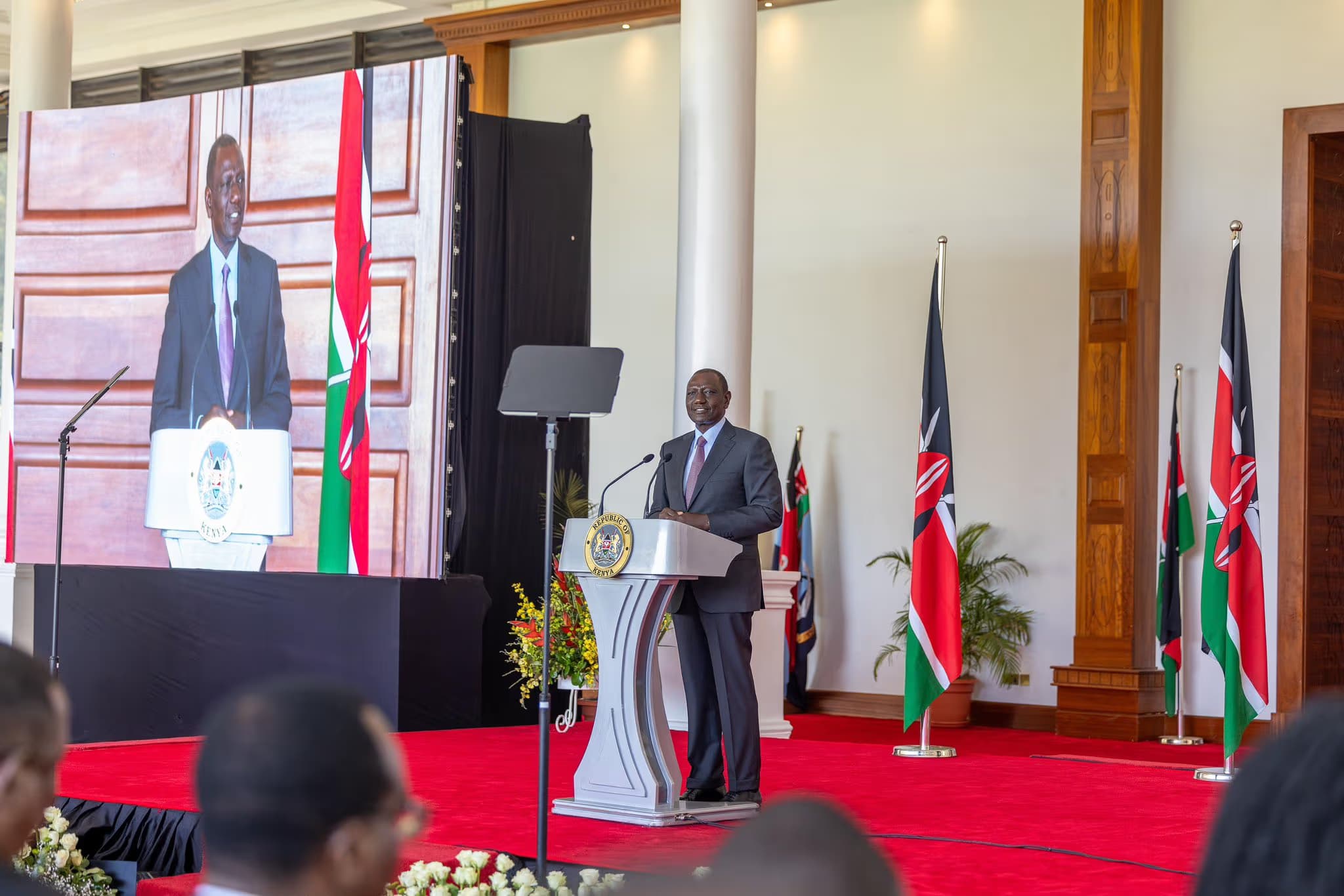We're loading the full news article for you. This includes the article content, images, author information, and related articles.
President Ruto champions his administration's youth empowerment initiatives as the definitive path to prosperity, directly challenging opposition critiques amid a complex economic landscape of high unemployment and revised growth forecasts.

NAIROBI – In a direct appeal to Kenya's youth, President William Ruto on Friday, November 7, 2025, urged them to disregard opposition criticism and place their faith in his government's economic agenda. Speaking at the Mumias Sports Complex in Kakamega County during the launch of the National Youth Opportunities Towards Advancement (NYOTA) programme, the President positioned his administration as the sole architect of a viable future for young Kenyans. "When they push you to go to the streets, ask them how you will benefit from the demonstrations," President Ruto stated, framing the opposition's stance as political manipulation without tangible solutions.
The cornerstone of the President's address was the unveiling of the NYOTA programme, a World Bank-financed initiative redesigned from the previous Kenya Youth Employment and Opportunities Project (KEYOP). The programme aims to provide grants, not loans, to empower young entrepreneurs. During the launch, 12,155 youths from Western Kenya received an initial tranche of KSh 22,000 each, with KSh 3,000 directed to a savings account to foster a savings culture. President Ruto announced that a total of 110,000 beneficiaries nationwide are targeted to receive their first payment within two weeks.
This initiative is part of a broader strategy under the Bottom-Up Economic Transformation Agenda (BETA), which includes the Affordable Housing Programme and the Financial Inclusion Fund, popularly known as the Hustler Fund. The government presents the housing program as a major job creator, particularly for women and youth, who reportedly constitute nearly 75% of the workforce at construction sites. Proponents argue it provides a pathway to asset ownership for low-income earners, with units priced for those earning as little as KSh 20,000 per month.
The Hustler Fund, launched in November 2022, has disbursed over KSh 52 billion to more than 23 million registered members as of January 2025, according to government data. However, the fund faces significant challenges, including high default rates and severe underfunding, with disbursements plummeting in the 2024 fiscal year and officials considering a write-off of up to KSh 6 billion in early loans.
The opposition has consistently criticized these programs, citing the high cost of living, rising taxes, and a disconnect between government promises and the reality for ordinary citizens. Critics argue that the administration's policies have failed to curb youth unemployment and that initiatives like the Hustler Fund have not created sustainable enterprises as promised. These criticisms have been amplified following youth-led anti-tax protests in 2024, which forced the government to withdraw the controversial Finance Bill. Opposition leaders have characterized presidential apologies following these protests as insincere, holding the head of state accountable for police actions during the demonstrations.
Independent data presents a sobering backdrop to the political debate. The World Bank, in mid-2025, revised Kenya's economic growth forecast for the year down to 4.5% from a previous 5%, citing high public debt, rising interest rates, and reduced private sector credit. The Kenya National Bureau of Statistics (KNBS) 2025 Economic Survey, released in May, indicated that the economy created fewer jobs in 2024 than the previous year, with 90% of new roles being in the informal sector. While official definitions vary, youth unemployment remains a critical challenge. A 2025 Afrobarometer survey found that 43% of young Kenyans are unemployed and actively seeking work, with 55% believing the country is heading in the wrong direction. Other reports suggest the youth unemployment rate could be as high as 67%.
As the government rolls out new initiatives like NYOTA, the central question remains their capacity to meaningfully impact the nearly one million young people entering a strained job market annually. The administration's strategy hinges on fostering entrepreneurship and creating jobs through large-scale projects. The opposition, meanwhile, continues to challenge the efficacy and sustainability of this approach, demanding more immediate relief for citizens burdened by a high cost of living. For Kenya's youth, who stand at the intersection of these competing political visions, the tangible outcomes of these policies—in the form of stable jobs and economic opportunity—will be the ultimate measure of success.
Keep the conversation in one place—threads here stay linked to the story and in the forums.
Other hot threads
E-sports and Gaming Community in Kenya
Active 7 months ago
Popular Recreational Activities Across Counties
Active 7 months ago
The Role of Technology in Modern Agriculture (AgriTech)
Active 7 months ago
Investing in Youth Sports Development Programs
Active 7 months ago